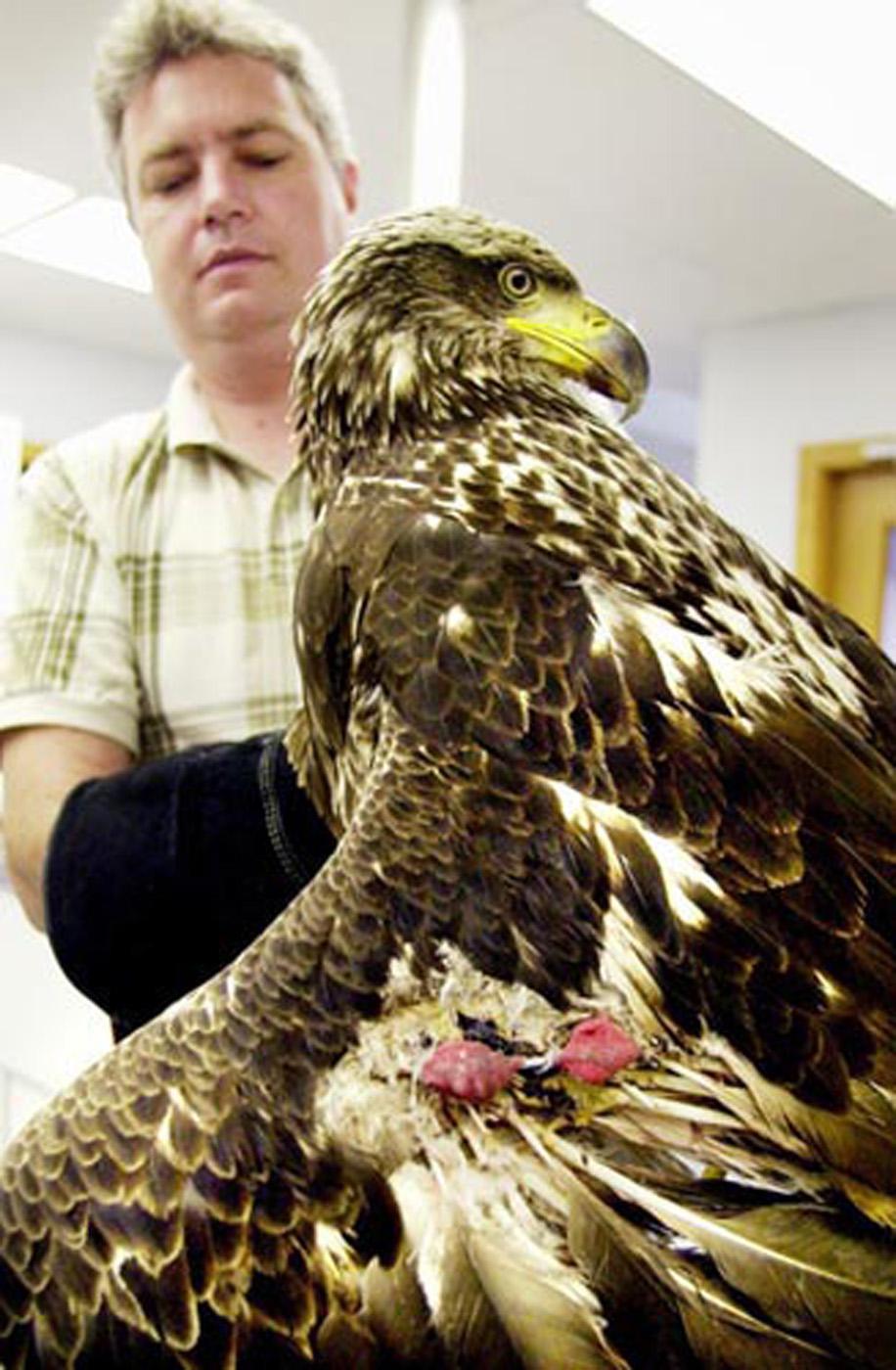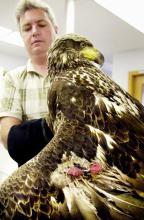Information Possibly Outdated
The information presented on this page was originally released on July 17, 2008. It may not be outdated, but please search our site for more current information. If you plan to quote or reference this information in a publication, please check with the Extension specialist or author before proceeding.
Veterinary career born from cesarean assistance
By Patti Drapala
MSU Ag Communications
MISSISSIPPI STATE -- At 8 years of age, Joey Burt assisted a prominent veterinarian with an emergency cesarean section on a cow, and a career was born that night.
Burt's family owned a small beef cattle farm in Columbia. Burt's father was away on an offshore job, and his mother called Dr. Cassie Price to deliver a calf. Assessing the situation, Price decided he had to operate.
“Dr. Price made two cuts and my mom made one swipe before she passed out,” the 1987 graduate of Mississippi State University's College of Veterinary Medicine said. “He calmly looked at me and asked if I could help. An hour or so later, all four-legged and two-legged animals were back on their feet doing well.”
Burt, the 2008 Alumnus of the Year at MSU's College of Veterinary Medicine, knew then he wanted to be a veterinarian.
Fascinated by science and driven by a love for animals, Burt chose animal science as his undergraduate major at MSU. He excelled at academics and gained early admittance into veterinary school.
As a veterinary student, Burt developed an interest in surgery and orthopedics and thrived under the influence of two mentors, Dr. Wayne Groce and Dr. Phil Bushby. Both professors supported his desire to challenge himself.
He said Groce encouraged students to develop themselves into complete professionals with independent thinking.
“During your first year of veterinary school, you immerse yourself in reading,” Burt said. “At Mississippi State, we were allowed to work in the clinics concurrently so that we would experience what we had read.”
The college's philosophy of a “two-year didactic/two-year clinical” progression is designed to provide additional opportunities for veterinary students to hone their clinical and problem-solving skills. The first two years of study are presented within a lecture/laboratory format. At the beginning of the third year, students begin their clinical rotations and follow that experience their senior year with more extensive clinical exposure both on- and off-campus.
“Mississippi State has always made the effort to allow freshman and sophomore veterinary students to participate in clinical rounds activities to allow them to relate their classroom experience to real-world situations they will encounter once they enter the clinical phase of study in the third year,” said Groce, now a retired CVM professor.
One of Burt's favorite clinical assignments as a senior veterinary student was to help provide health care for the security dogs, or K-9 unit, for the Mississippi State Penitentiary in Parchman. This experience, which taught him to appreciate the role the dogs play in maintaining order and safety, remains fresh in his mind today. Burt serves as primary care veterinarian for the canine units at Miami University of Ohio and the Oxford, Ohio, police department.
“These animals are often the first to be sent into a dangerous situation, and they face the inherent possibility of being attacked, shot or stabbed,” Burt said. “The dogs were recently fitted with bulletproof vests, which was rewarding for me to see because of the risks they face.”
Burt lives with his wife, Julie, his two children, Megan, 16, and Jeremy, 11, and their French bulldog, Belle, in Oxford, Ohio. He recently won an award for his Animal Care Clinic, designed with the help of Copich & Associates, an architectural firm in Youngstown, Ohio.
The goal was to create a clinic open to the needs and wants of animal patients and their owners.
“A clinic is a tool you can use to create an understanding of medicine,” Burt said. “Clients associate the clean lines and cleanliness of an animal clinic with competence and quality care. However, I didn't want the clinic to be sterile, or cold, to people.”
The award committee cited overall design, traffic flow patterns and client amenities that play a vital part in Burt's clinic. The facility includes a quiet room for waiting owners and a refreshment bar if the wait is extended.
His mentor is not surprised by Burt's achievement.
“As is the case with the vast majority of our veterinary students, Dr. Burt had an inquiring mind, was focused on his career goals and was always eager to enhance his knowledge beyond the material presented in the classroom,” Groce said. “From his accomplishments since graduation, it is evident he is still a lifetime learner.”
Contact: Dr. Wayne Groce (662) 325-1326




